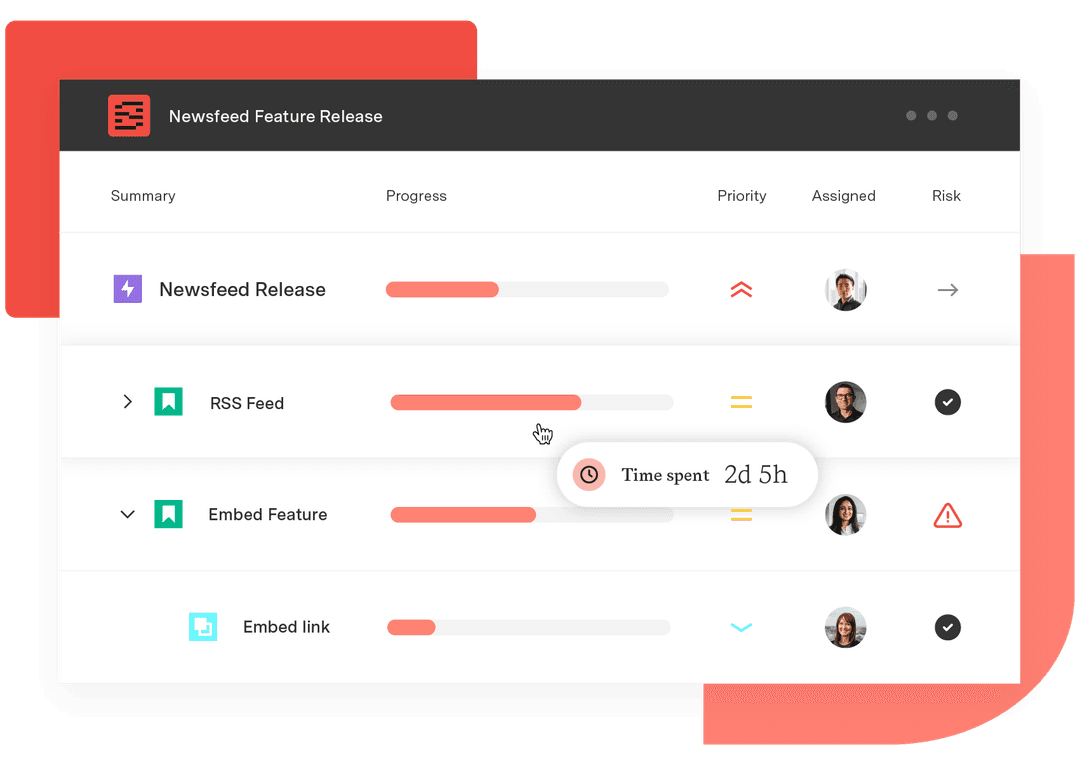Finding the right gear: How Škoda Auto drives efficiency with Tempo
Tempo Team
Key Takeaways
Škoda needed a better way to manage time tracking, auditing, and resource allocation at scale.
Tempo Timesheets and Structure brought clarity to work progress, costs, and team capacity.
Better data enabled smarter forecasting, faster decision-making, and a simpler auditing process.
Overview
As one of the world’s largest automotive manufacturers, Škoda Auto operates in a highly competitive industry where efficiency and resource optimization are crucial. With hundreds of teams worldwide working on complex projects, it can be challenging to track work progress, manage capacity at scale, and ensure accurate auditing.
Škoda implemented Timesheets and Structure PPM to address those needs, enabling better visibility, cost tracking, and auditing across its organization. With hundreds of teams actively using Tempo, these tools have become essential in streamlining operations, reducing administrative overhead, and optimizing resource planning.

The challenge
Škoda Auto faced three key challenges:
Tracking work progress and time spent across a vast network of internal teams and external contractors
Auditing service performance and ensuring accurate cost allocation
Translating time tracked into development costs for budgeting and forecasting
Visibility into the work being done, and associated costs, is critical to make data-driven decisions. However, without a centralized, integrated solution, tracking effort efficiently and extracting meaningful insights was a time-consuming process.
The solution: Timesheets for visibility and auditing
Streamlining time tracking for auditing and planning
Timesheets emerged as the ideal solution for Škoda’s teams, offering a native Jira experience that made logging and exporting time-tracking data seamless. For Matyas Blaha, business analyst at Škoda’s AI Competence Centre, Timesheets provides the critical visibility needed for auditing and reporting.
“As a business analyst overseeing a vital part of Škoda’s business, I have multiple meetings every day to discuss how my team can support other teams,” said Blaha. “All of this has to be logged in Jira to ensure visibility into the work being done for auditing purposes. Timesheets makes the process simple and efficient.”
Škoda’s AI team, consisting of business analysts, project managers, and developers, uses Timesheets data to optimize capacity planning for upcoming quarters.
“Historic Timesheets data is incredibly useful for planning future projects, especially for estimating developer time. It helps us optimize capacity planning and ensure that internal customers get the support they need.” Matyas Blaha, Business Analyst, AI Competence Centre
Supporting auditing and cost allocation
For Martin Sahula, expert coordinator for group software delivery, Tempo Timesheets plays a key role in auditing and tracking resource allocation.
“We perform regular process audits to evaluate individual service performance. Tempo helps us gain insight into work progress and resource allocation to support operational decisions.”
- Martin Sahula, expert coordinator, group software delivery
Since Škoda’s AI team operates as a centralized resource, internal customers must request access and pay for services. Accurate time-tracking data is essential for cost calculations and financial planning.
“Timesheets is a key tool for calculating costs for budgeting and auditing. Since our internal teams don’t record developer costs in Jira, Timesheets provides an easy way to log time and export data into SAP” said Jan Ometak, product owner.
With Timesheets acting as a system of record, Škoda can easily revisit past projects to understand where time was spent, validate costs, and support future decision-making.
“I check Timesheets several times a day as I’m often asked to justify time spent on projects. The ability to pull historic data allows us to provide rough estimates for future work,” recalls Ometak.

Enhancing visibility with Structure
Beyond Timesheets, Škoda also leverages Structure to organize work, track progress, and maintain a clear hierarchy of tasks.
Structure provides:
A centralized view of project progress, helping teams break down complex workstreams
Improved resource allocation, ensuring teams can pivot quickly based on business needs
Better reporting for stakeholders, making it easier to track milestones and priorities
While Timesheets plays the primary role in visibility, time tracking, and auditing, Structure complements it by providing a structured, real-time view of ongoing work across teams.
The impact
By implementing Timesheets and Structure, Škoda Auto has:
Increased efficiency by reducing the manual effort needed for time tracking and auditing
Gained full visibility into work progress and associated costs
Streamlined financial reporting, enabling better budgeting and forecasting
Optimized resource planning, allowing teams to pivot quickly and improve service delivery
With Tempo’s tools embedded seamlessly in Jira, Škoda Auto continues to drive operational excellence and strategic decision-making in a fast-paced industry.
“Tempo’s flexibility allows different teams to use the tools in the way that best fits their needs. Whether it’s tracking time for auditing, managing budgets, or optimizing capacity, Tempo provides the visibility we need to keep operations running smoothly,” said Ometak.
Conclusion
In a highly competitive market, efficiency and visibility are key to success. With Tempo Timesheets and Structure, Škoda Auto has transformed the way it tracks work, manages resources, and ensures financial accuracy.
By integrating native Jira solutions that provide flexibility and real-time insights, Škoda continues to refine its operations, ensuring that teams remain agile and well-equipped to meet the challenges of the future.
Ready to improve visibility and efficiency in your organization?
Explore how Timesheets and Structure can help your teams optimize their workflows.


